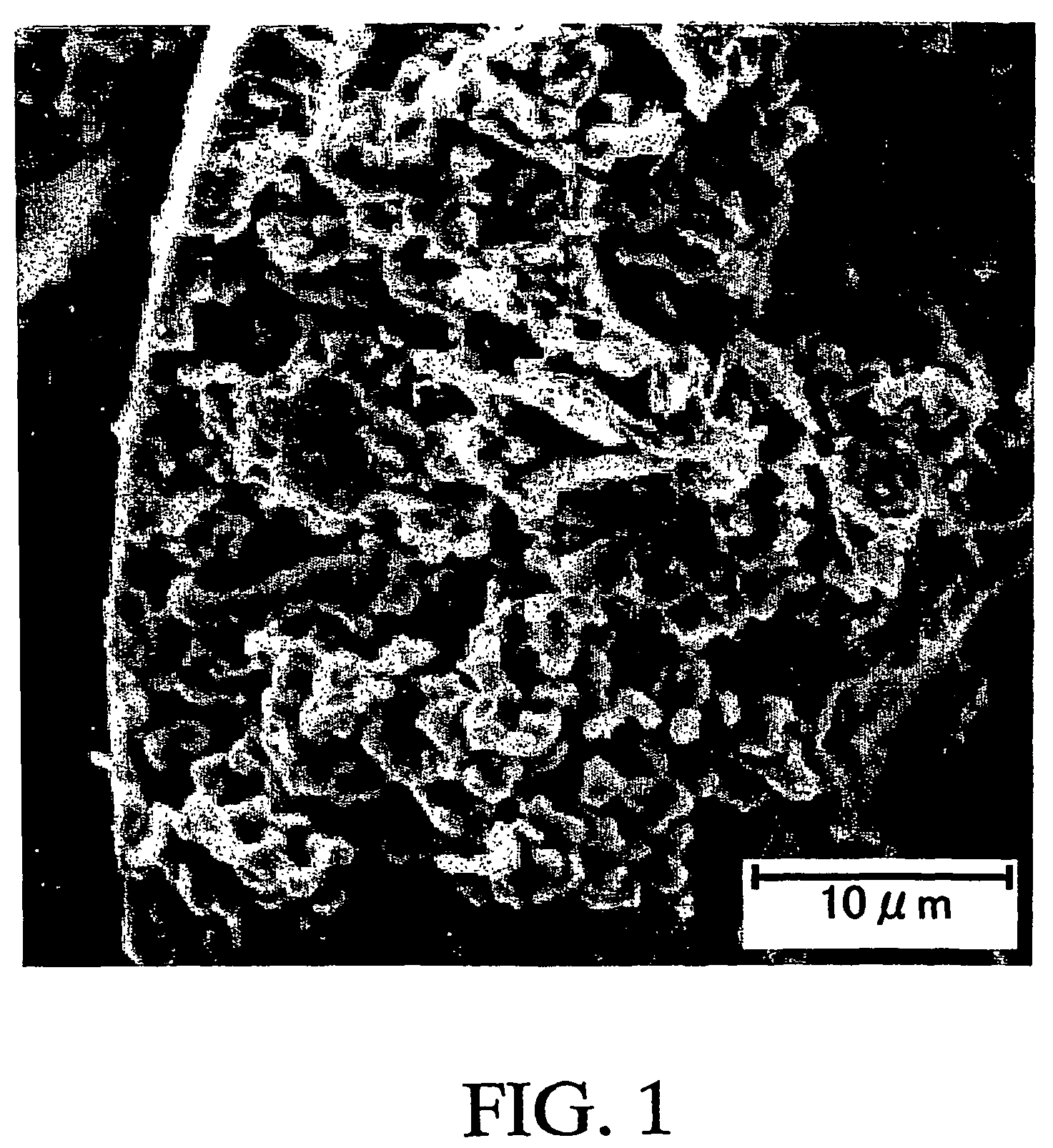Process for preparing detergent particles
a technology of detergent particles and granules, which is applied in the field of detergent particles, can solve the problems of difficult to efficiently obtain detergent particles having a sharp particle size distribution, and the particle size distribution of the resultant particle would become wider
- Summary
- Abstract
- Description
- Claims
- Application Information
AI Technical Summary
Benefits of technology
Problems solved by technology
Method used
Image
Examples
example 1
[0164]Base particles were prepared by the following procedures.
[0165]The amount 492.3 kg of water was added to a 1 m3-mixing vessel having agitation impellers. After the water temperature reached 55° C., 128.9 kg of sodium tripolyphosphate and 211.3 kg of sodium sulfate were sequentially added thereto. The jacket was set at 45° C. After agitating the mixture for 10 minutes, 12.9 kg of a 40% by weight-aqueous sodium polyacrylate solution and 154.6 kg of sodium carbonate were added thereto, and the resulting mixture was then agitated for 60 minutes, with pulverizing under circulation in a line mill, to give a homogeneous slurry. The final temperature of this slurry was 50° C. In addition, the water content of this slurry was 50% by weight. Incidentally, the average particle size of fine particles present in this slurry was determined using an FBRM system. As a result, the average particle size was 28 μm.
[0166]This slurry was sprayed at a spraying pressure of 35 kg / cm2 with a pressure ...
example 2
[0170]Base particles were prepared by the following procedures.
[0171]The amount 434.5 kg of water was added to a 1 m3-mixing vessel having agitation impellers. After the water temperature reached 55° C., 178.6 kg of sodium sulfate and 127.6 kg of sodium tripolyphosphate were sequentially added thereto. The jacket was set at 45° C. After agitating the mixture for 10 minutes, 25.5 kg of a 40% by weight-aqueous sodium polyacrylate solution, 153.1 kg of sodium carbonate, 63.8 kg of 40% by weight-No. 2 Sodium Silicate, and 17.0 kg of 30% by weight-LAS-Na were added thereto, and the resulting mixture was then agitated for 60 minutes, with pulverizing under circulation in a line mill, to give a homogeneous slurry. The final temperature of this slurry was 52° C. In addition, the water content of this slurry was 50% by weight. Incidentally, the average particle size of fine particles present in this slurry was determined using an FBRM system. As a result, the average particle size was 27 μm....
example 3
[0176]Base particles were prepared by the following procedures.
[0177]The amount 456.3 kg of water was added to a 1 m3-mixing vessel having agitation impellers. After the water temperature reached 55° C., 92.9 kg of 40% by weight-No. 2 sodium silicate and 218.4 kg of sodium sulfate were sequentially added thereto. The jacket was set at 45° C. After agitating the mixture for 10 minutes, 46.5 kg of a 40% by weight-aqueous sodium polyacrylate solution and 185.9 kg of sodium carbonate were added thereto, and the resulting mixture was then agitated for 60 minutes, with pulverizing under circulation in a line mill, to give a homogeneous slurry. The final temperature of this slurry was 45.7° C. In addition, the water content of this slurry was 54% by weight. Incidentally, the average particle size of fine particles present in this slurry was determined using an FBRM system. As a result, the average particle size was 22 μm.
[0178]This slurry was sprayed at a spraying pressure of 35 kg / cm2 wit...
PUM
| Property | Measurement | Unit |
|---|---|---|
| density | aaaaa | aaaaa |
| particle size | aaaaa | aaaaa |
| temperature | aaaaa | aaaaa |
Abstract
Description
Claims
Application Information
 Login to View More
Login to View More - R&D
- Intellectual Property
- Life Sciences
- Materials
- Tech Scout
- Unparalleled Data Quality
- Higher Quality Content
- 60% Fewer Hallucinations
Browse by: Latest US Patents, China's latest patents, Technical Efficacy Thesaurus, Application Domain, Technology Topic, Popular Technical Reports.
© 2025 PatSnap. All rights reserved.Legal|Privacy policy|Modern Slavery Act Transparency Statement|Sitemap|About US| Contact US: help@patsnap.com



